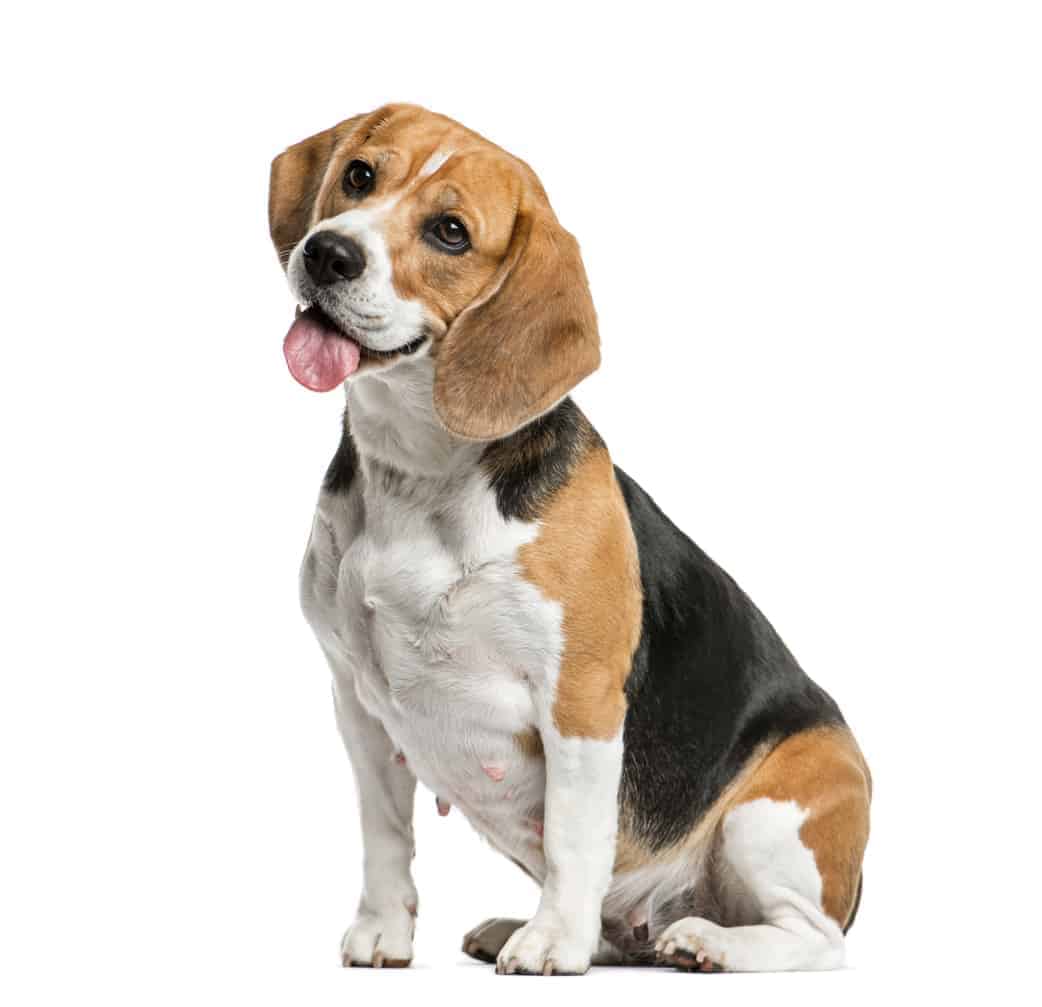Beagles are wonderful, charming dogs. They are compact, hardy fun-loving companions ready for any adventure. Sometimes though, there are some areas of our canine friends we would prefer not to deal with. One of these is Beagle anal glands.

Beagles are prone to problems with their anal glands. This can include anal gland impaction, infection, abscesses, and tumors. Controlling a Beagle’s weight, exercise and diet can help to reduce potential problems with anal glands. In some dogs, anal glands may need to be removed.
If you are unsure what anal glands are, their function, or why they cause so much trouble, do not worry; you are not alone. This article will give you all the information you need on your Beagle’s anal glands.
What Are Anal Glands?

Anal glands, sometimes called anal sacs, are two pea or grape-sized glands on either side of the anus. They are usually in the eight and four clock position, although this can vary slightly amongst dogs.
Anal glands are situated just under the skin in the muscles on either side of the anus. They are not typically visible from the outside unless they are massively inflamed and swollen. Anal glands have a series of pockets joined together, which open via a duct just inside the anus.
Anal glands produce a foul-smelling fluid, usually expressed as feces moving through and passing out the anus. The fluid contains pheromones (chemical messengers) which communicate information about the Beagle to other dogs in the area. Each mix of pheromones is unique to the dog.
A dog’s anal gland fluid can give information on the health, sex, reproduction status, and much more. It may also be used to mark territory. Dogs that are afraid may express the entire contents of their anal glands. This comes out as a noxious spray. The spray is an involuntary action and is not a deliberate expression such as skunks that use it as a defense mechanism.
The reason that anal glands are expressed during a fear reaction is not entirely clear. One theory is that it may communicate submission to a more dominant dog. Another thought suggests that in non- dog-related fear situations, the aggressor may be deterred by the smell of the fluid.
What Is Wrong With My Beagle’s Anal Glands?

Generally, fluid from anal glands is oily and yellow to grey or khaki-colored. If the fluid is not expressed regularly, it can build up and become impacted in the gland. The fluid becomes much thicker and stickier, more like a paste, which is difficult for the dog to express naturally. Hard, impacted anal glands cause discomfort.
Impacted anal glands easily become infected, leading to abscesses which are extremely painful for the dog. The abscess may rupture into the rectum or outside next to the anus.
Tumors may grow in the anal glands. These are mostly cancerous and are known as apocrine anal gland adenocarcinoma. Fortunately, these tumors are uncommon and occur more often in certain breeds, which do not include beagles.
How Do I Know If My Beagle Has Anal Gland Problems?
Beagles with anal gland problems will show it quite clearly. Scooting is a common behavior in dogs with impacted or infected anal glands. You Beagle will drag its butt over the ground. Although this may look comical, it is done to try and gain some relief from the pain and itchiness.
The dog may also lick or chew at its tail and anal area. Sometimes the Beagle may chew around its thigh if it cannot reach the tail.
Any pus or fluid leakage and swelling are cause for concern and should be investigated immediately. Blood on the dog’s feces, straining or vocalizing while defecating, and a foul odor indicate anal gland problems.
Anal gland fluid has a particularly nasty odor. Once you have smelt it once, you can always identify it again. Some people say it smells fishy, and others say it is metallic. It is a pungent, persistent smell that is difficult to eradicate from clothing or your hands.
Why Does My Beagle Get Anal Gland Problems?
Anal glands can be insufficiently emptied if the Beagle has diarrhea or constipation. If the feces is not solid enough or does not happen often enough, the glands become impacted by a build-up of secretions.
It is important to ensure that your Beagle has good digestive health and regular bowel movements. Adding fiber to the food, such as pumpkin, green beans, or psyllium husk, can aid in emptying the anal glands.
Food allergies and inflammatory bowel disease can make Beagles more likely to have digestive upsets and, as a result, more challenges with their anal glands. Managing digestive issues is of critical importance.
Environmental allergies and flea or mite infestation can also increase the risk of a Beagle experiencing anal gland impaction and infection. Skin irritations may also cause the dog to scoot and damage the area surrounding the anus, predisposing it to anal gland issues.
Overweight dogs more commonly suffer from anal glands that are not emptied. Layers of fat prevent the feces from pushing on the anal glands, expressing them when necessary. Impaction and infection result.
Overweight or old Beagles have difficulty squatting when defecating. Squatting puts the dog in the correct position for anal glands to be naturally expressed during toileting.
Beagles are dogs that easily become overweight. They eat anything they can and have a high need for exercise. Owners may also overfeed Beagles as they cannot resist the pleading ‘feed me” eyes. Many Beagles do not get sufficient exercise. All of this adds up to a breed prone to weight and anal gland issues.
Beagles have an easy coat to care for and do not often visit groomers. Some Beagle owners use groomers for bathing their dogs and clipping their nails. Groomers often offer anal gland expression as a service, which may seem like a good idea.
The truth is that expressing the anal glands too often and incorrectly can cause inflammation, worsen impaction and result in infection.
What Should I Do If My Beagle Has Anal Gland Problems?
Consulting a veterinarian is the best action if you suspect your Beagle has anal gland discomfort. The veterinarian will assess the problem and give you the appropriate course of action.
If your Beagle has persistent anal gland impaction, the veterinarian may show you how to express the glands at home correctly. In severe cases, the anal glands may need to be removed surgically.
Ensuring your Beagle has the correct diet and remains at an appropriate weight with sufficient exercise helps reduce problems.
Conclusion
Beagles are more susceptible to anal gland problems than some other breeds. Good diet, weight control, and exercise help manage anal gland issues.
References
https://www.petmd.com/dog/general-health/anal-glands-dogs
https://petcureoncology.com/anal-gland-tumors-in-dogs/
https://vetsaverspethospital.com/stinky-smell-pets-hiney/
https://www.akc.org/expert-advice/vets-corner/anal-gland-disease-in-dogs/
https://shallowfordvet.com/anal-glands-and-recognizing-problems/

